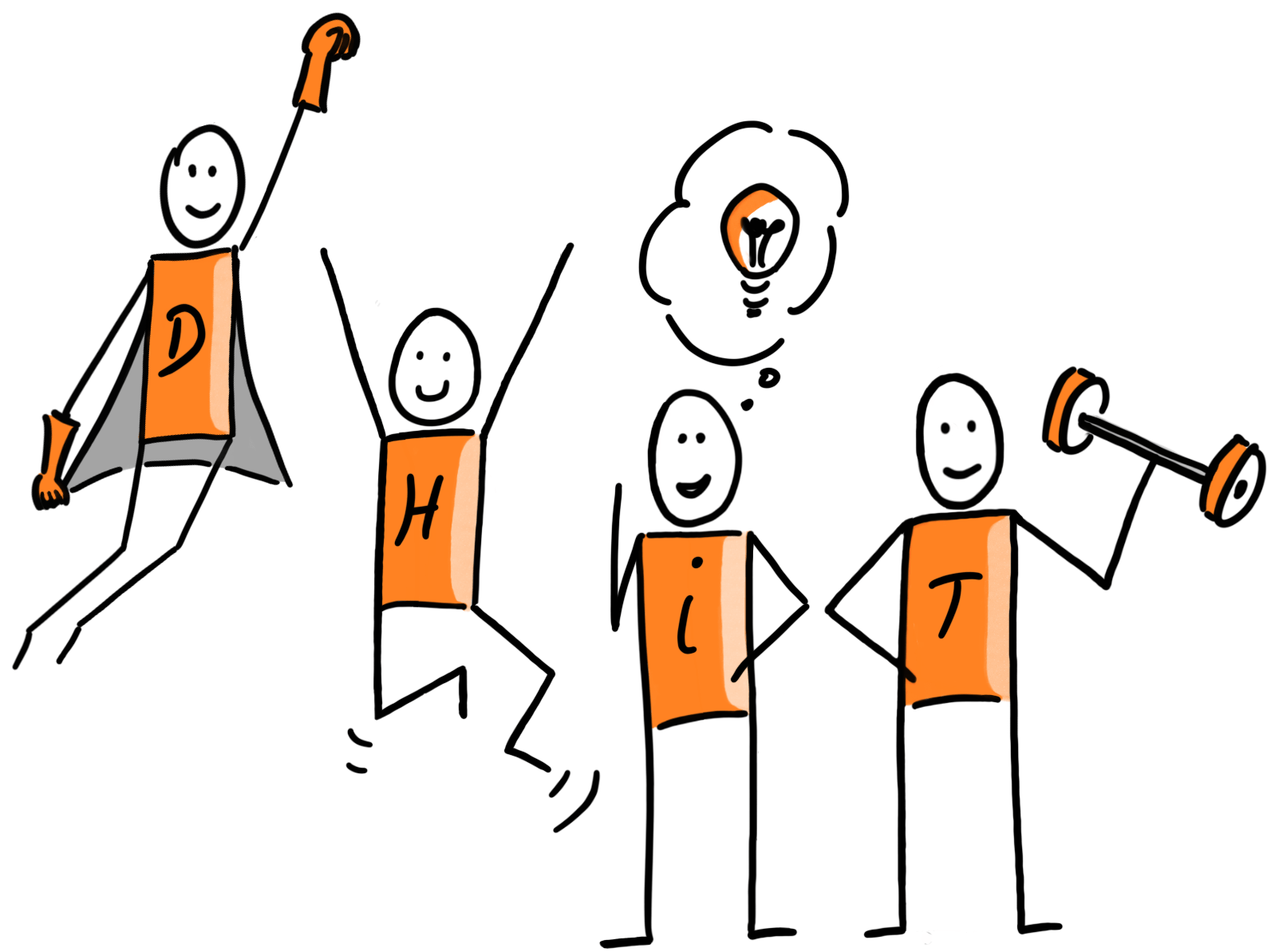The history of DHIT®


Learning diaries, concrete objectives of the participants before the start of the measure, involvement of the supervisor, individual clarification of expectations and, following the training, so-called implementation partnerships, reminder letters to oneself, apps and much more, helped and still help to implement what has been learned in everyday life.
Already in the “pre-Corona time” we implemented trainings in blended concepts with longer learning journeys, taking into account that behavioral changes take longer. It takes time to try out new skills, reflect on them and improve them.
This means that the design of learning journeys with targeted knowledge units, practice applications, transfer tasks and self-learning units, on the one hand, and the use of digital training options, on the other, were and are standard for us.
Lessons learned from the pandemic
Then came 2020 with the surge in digital-only learning opportunities.
All of us who run live online sessions and digital training with larger groups ourselves know the challenges of making them interactive so that participants are interested and actively engaged in the training.
The likelihood of getting distracted, quickly checking a few emails when something is happening that doesn’t interest me or isn’t relevant to me, is much higher than when I’m physically present in a room.
This has been a crucial impulse for us: What happens – i.e. impulse, exercise, transfer- has to be relevant for each individual . The learner determines what he learns. This sovereignty of the learner is particularly evident online. Therefore, we needed an even clearer “individualization” of the measure.
In addition, we realized that the participants were most active and working with a higher intensity on the respective tasks in small groups and that we often heard the wish to have more time for this, both in face-to-face and online events.

Inspired by sport
DHIT® only takes place in small groups, i.e. max 4 people, to enable intensive exchange and the introduction of individual questions. In the small group work, knowledge impulses are built in along the individual participant needs. The learner – and not a target group – is in the center.
Special competencies make DHIT®’s so effective
We realized that we needed competencies for the DHIT® that go beyond target group oriented training:
- “Expert knowledge and experience” on the particular concerns of the participants in order to be able to give advice.
- Competency to transfer knowledge and curation competency to impart relevant knowledge and shape the impulses.
- A coaching mindset and the “taking back” that comes with it are also necessary, as the learner and their concerns are paramount.
- And, as if this were not enough, DHIT always takes place with digital support. This allows the benefits of digital learning to be maximized. The ability to work and train virtually is thus another requirement for the trainer.
Initial feedback from trainers/consultants and from participants
Initial feedback from trainers/consultants and from participants
This has given us a lot of energy to further expand our DHIT® offering and to support our participants in even more subject areas, to find solutions for relevant and personal challenges and to expand capabilities that are relevant for their practice.
Autorin

